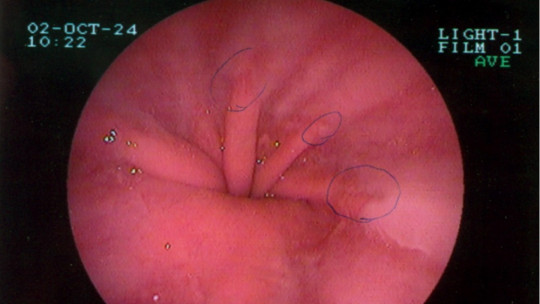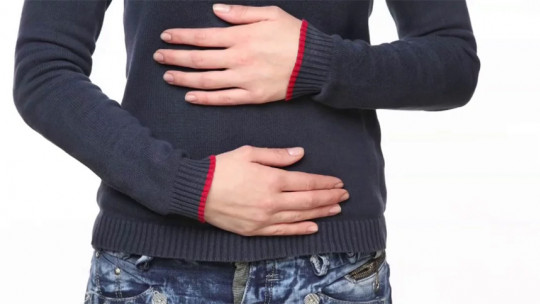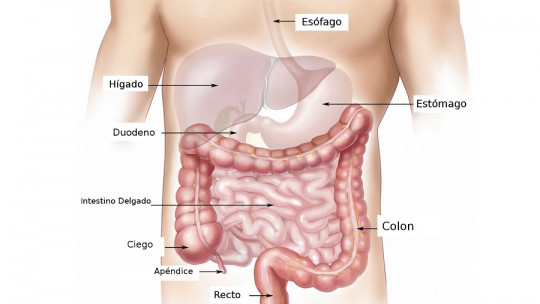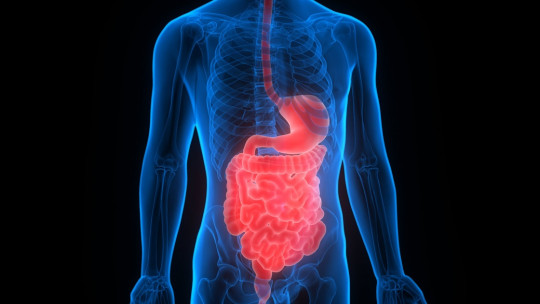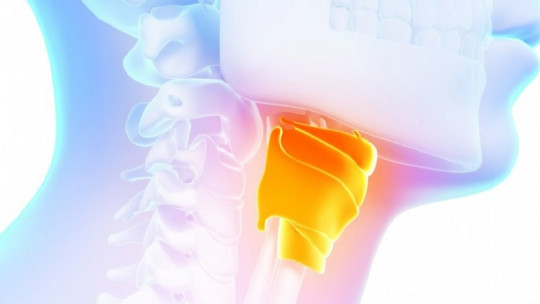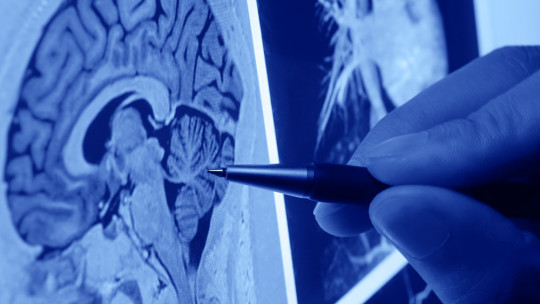Eating food and drinks is extremely necessary for our existence, basically because it is the only natural way we have to obtain the nutrients that our body needs.
The mouth, esophagus, larynx and other parts of the upper digestive tract intervene when we eat, so if there is an injury or problem with these parts, we will have problems swallowing.
Dysphagia is a problem when swallowing , either foods or liquids, and can be a symptom of many diseases, injuries and neurological problems. Although it is a symptom in itself, the impact on the patient’s quality of life can be very serious. Let’s find out what can cause it.
What is dysphagia?
Dysphagia (from the Greek “dis,” meaning difficulty; and “phages,” meaning eating) is difficulty swallowing, that is, it is the technical term for problems swallowing food and/or liquids This problem is usually accompanied by sometimes very intense pain and is usually a sign of a disease of the esophagus or nearby organs, in addition to possibly being due to gastroesophageal reflux (heartburn).
dysphagia It is a relatively common condition that increases in prevalence with age and can seriously affect the life of the affected person It does not only imply a feeding problem, but there are also alterations in salivation, phonation (speech) and the use of medications, all of which are problems that add to the reduced self-esteem of the patient who sees that he cannot live a life. normal due to problems swallowing and controlling the mouth.
The diagnosis takes into account whether the patient has problems swallowing solid foods, liquids or both , and is based on clinical history, involving a wide range of professionals such as digestologists, neurologists, digestive and maxillofacial surgeons, neurosurgeons and pain specialists. If it becomes a chronic problem, it can lead to serious problems such as dehydration, malnutrition and weight loss, in addition to problems related to the airways such as the risk of lung involvement, occasionally serious aspirations with pneumonia and collapse.
During the evaluation it is normal to use esophagogastroduodenoscopy. The esophagram and esophagoscopy are also used, which are usually sufficient tools to confirm the diagnosis, although neurological tests such as evoked potentials, video-radiology, and esophageal pressure or pH studies are also used.
Phases of swallowing
One of the reasons why dysphagia can be so painful is that it is a consequence of impaired swallowing, an important and complex process for vital well-being and health. The pain or injury behind this problem can be found in many parts, such as the tongue, pharynx, jaw, ears and neck, places that are either directly involved in the swallowing process or muscles related to them are used.
There are several phases that food must go through to reach the stomach, and all of them involve the activation of different muscles and organs. This process consists of the following three phases from top to bottom:
1. Oral phase
It occurs in the mouth with chewing forming the bolus and passing it to the pharynx.
2. Pharyngeal phase
Closure of the nasopharynx with the soft palate is necessary for swallowing to occur ; The larynx is elevated and closed with the epiglottis and thyroid cartilage. The upper esophageal sphincter opens and the pharyngeal muscle contracts, projecting the bolus into the esophagus and preventing it from entering the airway.
3. Esophageal phase
The bolus reaches the esophagus, which leads it to the stomach through stomach peristaltic contractions and coordinated relaxation of the lower esophageal sphincter.
Symptoms of dysphagia
Dysphagia itself is a symptom of an underlying disease or injury, but brings with it various annoyances and problems Among the main symptoms associated with dysphagia we can find.
Classification of dysphagia
Dysphagia can be classified based on two criteria: distribution and progression.
According to its distribution
Within dysphagia according to its distribution, that is, where in the upper digestive tract is the problem? we find:
1. Oropharyngeal dysphagia
There are problems at the cervical level in passing food from the mouth and pharynx to the esophagus.
2. Esophageal dysphagia
There is difficulty passing food through the esophagus.
According to your progression
Within dysphagia, according to its progression, we also find two types:
1. Logic
Logical dysphagia is permanent and progressive First there are problems with solid foods, followed by softer foods and then liquids.
2. Illogical
Illogical dysphagia is characterized by being intermittent or discontinuous , with problems swallowing food but very erratically. It can be given with both solid and liquid foods.
Causes
There can be many causes that cause swallowing problems. Typically, dysphagia It occurs as a symptom of another condition, so its etiology is very broad and varied , ranging from neurological causes to organic diseases and local injuries. Among the causes behind this problem we can find the following, grouped into typologies:
Neurological problems:
Muscle problems:
Local obstructive damage:
- Post-irradiation fibrosis
- Tumors in the mouth, pharynx, larynx, or thyroid
- Inflammatory processes: tonsillitis, pharyngitis…
- Zenker’s diverticula
Functional disorders:
- Motor disorders of the upper esophageal sphincter
- Pharyngoesophageal motor incoordination
- Pharyngeal hypomotility
- Gastroesophageal reflux disease
- Goiter
- Infections
- Chagas disease
- Plummer-Vinson syndrome
Treatment
As dysphagia is a symptom, there are no specific curative treatments for this condition and treatment is aimed at curing the problem that causes it. Treatments for dysphagia are normally palliative, trying to improve the patient’s swallowing or avoiding it depending on the problem in question In dysphagia associated with neurodegenerative or systemic diseases, it is expected that the problem will worsen, requiring surgical interventions such as gastrostomy to nourish the patient.
If what causes it is an infection, inflammation or the presence of a tumor, the treatment will be focused directly on eliminating these problems using drugs and surgical interventions Once the intervention has been carried out, it will be studied to what extent the patient’s swallowing has improved after the elimination of what was causing it. After that, they try to improve their lives with the help of speech therapists and speech therapists who will train their speech apparatus.
If the problem is due to some neurological alteration, such as medical irritations or traumatic lesions of the sensitivity of the face and oropharynx, intervention is usually done using drugs such as pregabalin, lacosamide, eslicarbazepine or topiramate, to reduce the frequency and intensity of the paroxysms. that accompany the neuralgia associated with these problems.
To prevent it from getting worse and improve the patient’s quality of life, other options are:
- Adapt the texture of foods and liquids using thickeners or grinding.
- Dilate the area with narrowing or reduce the pressure of the lower esophageal sphincter through an esophagomyotomy.
- Paralyze the muscles involved using botulinum toxin.
- Use a nasogastric tube to introduce food and drinks.
- Perform a gastrostomy: direct tube to the stomach through the anterior wall of the abdomen and introducing food directly.
- Avoid consuming spicy food, exciting drinks and alcohol.
- Smithard, D.G. Smeeton, NC, Wolfe CD (2007). Long-term outcome after stroke: does dysphagia matter?. Age and Aging, 36(1): pp. 90 – 94. doi:10.1093/ageing/afl149. PMID 17172601
- Brady A (2008). Managing the patient with dysphagia. Home Healthcare Nurse. 26 (1): 41–46, quiz 47–48. doi:10.1097/01.NHH.0000305554.40220.6d. PMID 18158492. S2CID 11420756
- Spieker MR (2000). Evaluating dysphagia. American Family Physician. 61 (12): 3639–48. PMID 10892635
- Vidal, A. (2020). Dysphagia and odynophagia: disease or symptom. The Pain Blog. Extracted from https://elblogdeldolor.com/2020/12/07/517/


